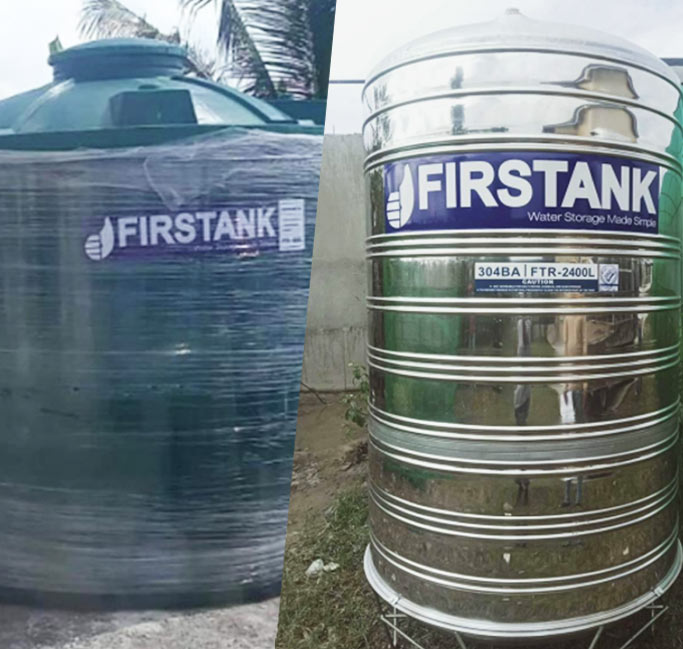Water storage tanks are an essential investment for many homeowners, businesses, and communities around the world. They provide a reliable source of water for a variety of uses, including drinking, cooking, cleaning, and irrigation. When it comes to choosing a water tank, one of the most important decisions is whether to opt for a steel or plastic tank. In this article, we will explore the pros and cons of each type of tank and provide some guidance on how to make the right choice.
Let’s examine steel water tanks.
Steel is a durable and long-lasting material that can withstand extreme weather conditions, including high winds, heavy rains, and even earthquakes. Stainless steel tanks are also fire-resistant, which is a crucial factor for areas prone to wildfires. Another advantage of steel tanks is that they are resistant to pests and rodents, which can be a problem with plastic tanks. Furthermore, steel tanks can be painted or coated to match the surroundings or protect against corrosion, making them a popular choice for industrial or commercial applications.
What are the downsides to steel water tanks?
One of the most significant disadvantages is their weight. Steel tanks are heavier than plastic tanks, which can make them more challenging to transport and install. Additionally, steel tanks can rust and corrode over time, especially if they are not properly maintained. This can lead to leaks, which can compromise the quality of the water and damage the tank itself. Finally, steel tanks are typically more expensive than plastic tanks, which can be a deciding factor for those on a tight budget.
How about plastic water tanks?
Polyethylene water tanks have their own set of advantages and disadvantages. Plastic tanks are lightweight and easy to transport and install, making them a popular choice for residential applications. They are also resistant to rust and corrosion, which means they require less maintenance than steel tanks. Moreover, plastic tanks are generally less expensive than steel tanks, which can make them more accessible to a wider range of customers.
However, plastic tanks also have some limitations. One of the most significant disadvantages is their susceptibility to UV rays, which can cause them to degrade over time. This can lead to cracks and leaks, which can affect the quality of the water and damage the tank. Plastic tanks are also less durable than steel tanks, which means they may need to be replaced more frequently. Finally, plastic tanks are less fire-resistant than steel tanks, which can be a concern for areas prone to wildfires.
So, how do you choose between a steel or plastic water tank?
The answer depends on your specific needs and budget. If you are looking for a durable and long-lasting solution that can withstand extreme weather conditions and protect against pests and rodents, a steel tank may be the best option for you. However, if you are looking for a lightweight and affordable solution that requires less maintenance, a plastic tank may be a better choice.
Bottomline
Both steel and plastic water tanks have their advantages and disadvantages. It is essential to weigh the pros and cons carefully and consider your specific needs and budget before making a decision. Whether you choose a steel or plastic tank, remember that proper maintenance is crucial to ensure its longevity and the quality of the water it stores. If you wish to learn more, check out the following articles:

